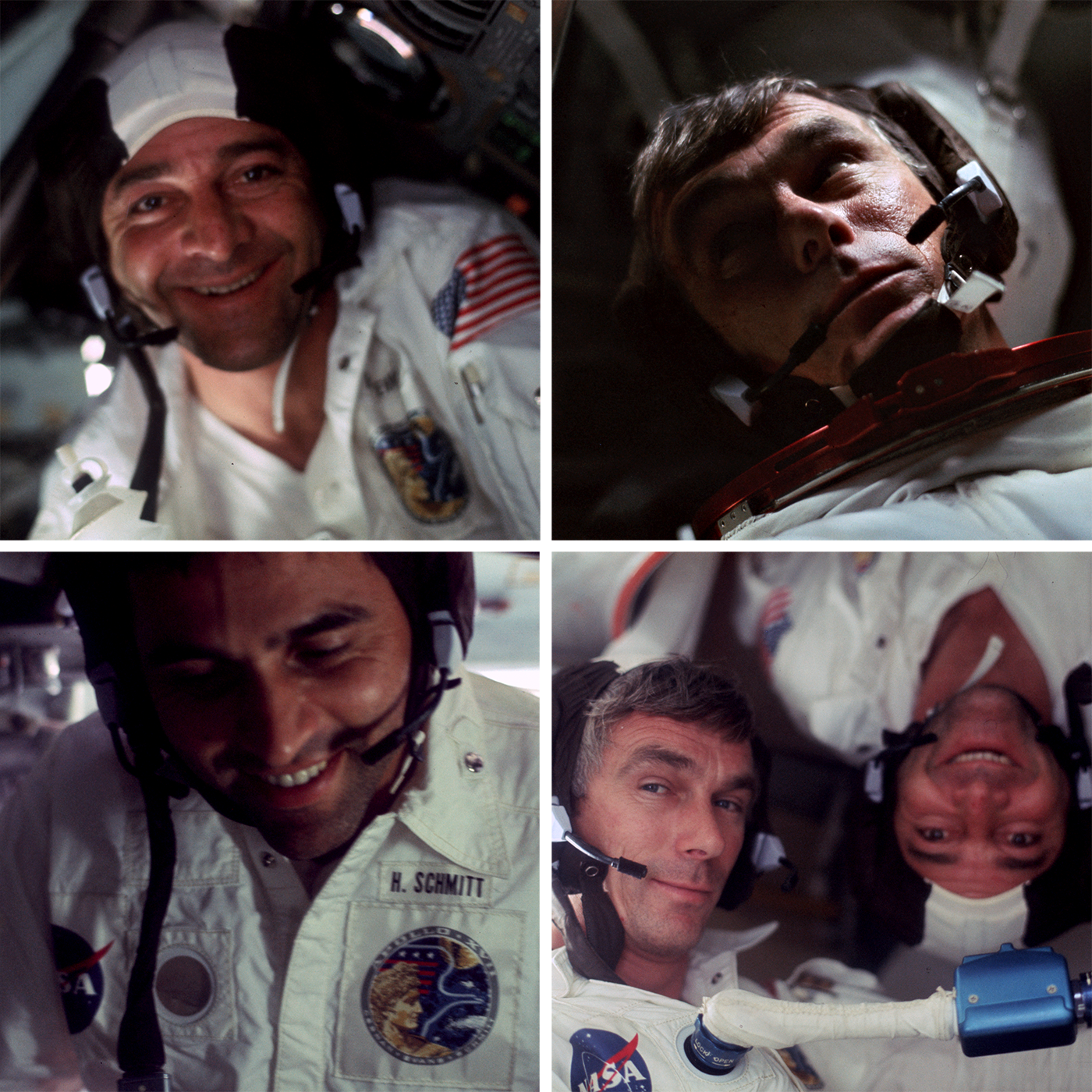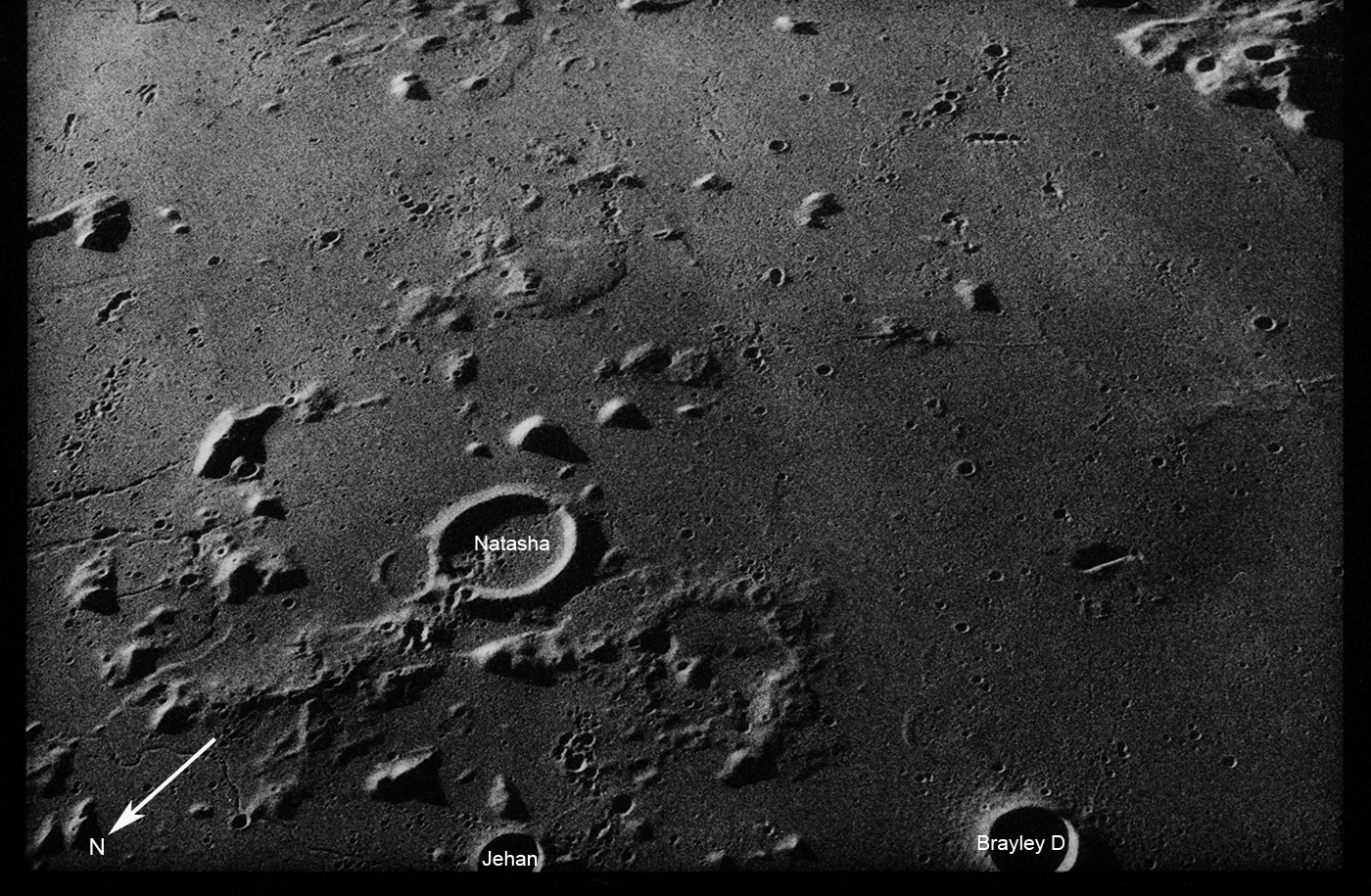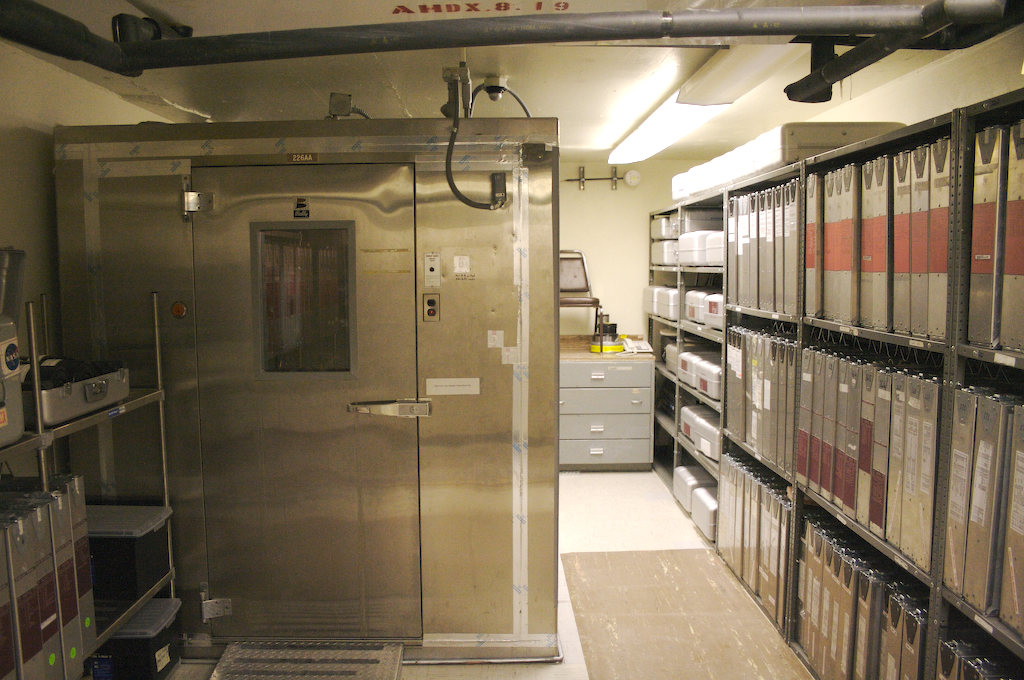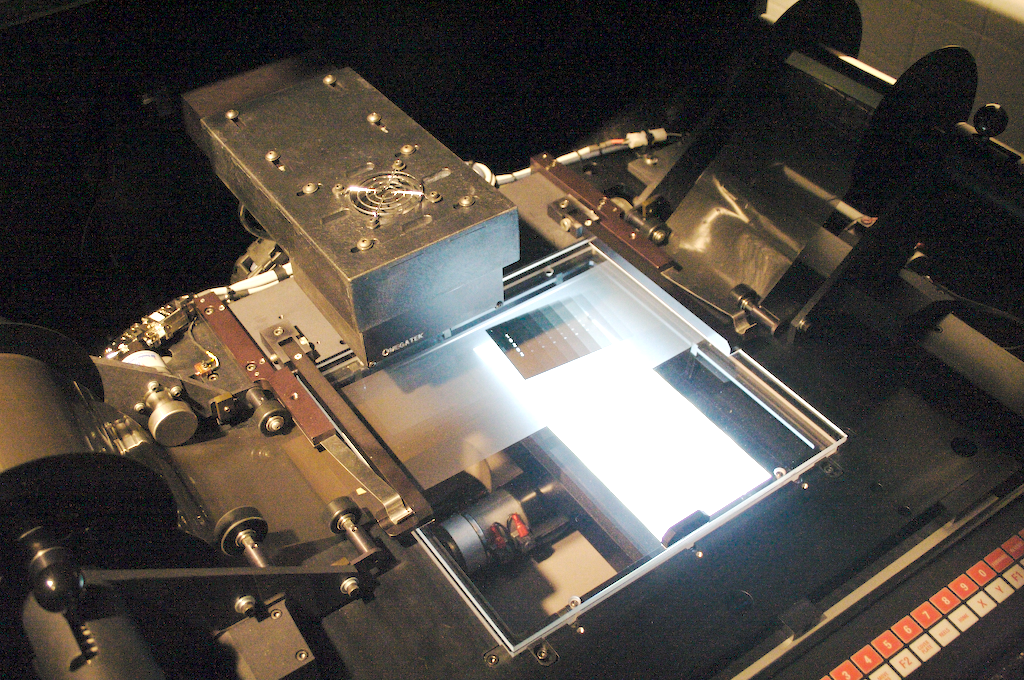Chris Dodkin
West Coast Correspondent
Continuing on a space theme (because I'm a bit of a space nut) - NASA have been busy scanning all of the films from the Apollo missions, and this has bought some lesser known 35mm images to light.

As well as the NASA Hasselblads on each flight - the Apollo crew also had a Nikon 35mm camera, mostly used for close-up detail shots of the lunar surface.

Stereo anaglyph (get out your red-blue stereo glasses!) AS14-77-10369a,b from the ALSCC showing extreme detail of an astronaut bootprint in the fine-grained lunar regolith.
They did however also use it to do some surprisingly informal crew shots, and some general scenery shots from orbit.

The films have been stored in an archival freezer to preserve them - but NASA feel that it's necessary to scan them to preserve the images, and to enable better study and distribution.

View inside of the refrigerator with the freezer on the left
The film is stored in a freezer (0° F), which is located in a large refrigerator that is maintained at 55° F. The staff at JSC has a rigorous procedure for removing film from the freezer for scanning or making copies.
The scanning process utilizes a Leica DSW700 photogrammetric scanner, shown here with lid up for the photo.

The films are scanned at very high spatial resolutions (up to 200 pixels/mm) and an extended bit depth (14-bit A/D) in order to insure that as much of the information content of the film is preserved.
First, all the 35-mm photographs were scanned (about 620 frames). Next, the Metric camera's 10,153 frames (BW) were scanned, and now the 4,612 frames from the Panoramic camera (BW) are being scanned. Finally, the approximately 20,000 Hasselblad photographs (BW and color) will be scanned.
For 35-mm:
Image Processing Notes
The scans of the Apollo flight films are processed using a standard set of procedures.
First, the unexposed portions of the film along the edges of a scanned frame are cropped, and the frame is straightened.
Second, the background is removed from all of the scans, by assuming that the average DN values of the unexposed regions at the edge of each raw scanned image represent the background (i.e., film base and fog).
Third, a flatfield correction (derived from the actual image data) removes vignetting to the first order.
Fourth, the reseau patterns (the small crosses visible on Apollo images published elsewhere) are removed from the images.
Fifth, a logarithmic histogram transformation is applied to the image. This is necessary because of the logarithmic response of film, which makes the raw scans appear very contrasty. Since photographic paper also has a logarithmic response and reverses the films response, conventional paper prints have a natural contrast range. The logarithmic histogram correction applied to the scanned images therefore produces a virtual print that simulates the natural contrast of a conventional paper print.
Sixth, since the uncompressed images produced by the initial scanning process result in extremely large images, the scale is reduced by a factor corresponding to the square root of 2, which serves to reduce the image size by 50%, and the images are converted from 16-bit to 8-bit.
All images and text courtesy of NASA/JSC/ASU.

As well as the NASA Hasselblads on each flight - the Apollo crew also had a Nikon 35mm camera, mostly used for close-up detail shots of the lunar surface.

Stereo anaglyph (get out your red-blue stereo glasses!) AS14-77-10369a,b from the ALSCC showing extreme detail of an astronaut bootprint in the fine-grained lunar regolith.
They did however also use it to do some surprisingly informal crew shots, and some general scenery shots from orbit.

The films have been stored in an archival freezer to preserve them - but NASA feel that it's necessary to scan them to preserve the images, and to enable better study and distribution.

View inside of the refrigerator with the freezer on the left
The film is stored in a freezer (0° F), which is located in a large refrigerator that is maintained at 55° F. The staff at JSC has a rigorous procedure for removing film from the freezer for scanning or making copies.
- The sealed film canister is transferred from the freezer to the refrigerator where it is allowed to equilibrate for 24 hours.
- The sealed canister is then removed from the refrigerator and placed in a room temperature environment and allowed to equilibrate for an additional 24 hours.
- The film is then removed from the canister, hand cleaned (see below) and scanned.
- The film is placed back in the canister, sealed, and then placed back in the cold vault.
The scanning process utilizes a Leica DSW700 photogrammetric scanner, shown here with lid up for the photo.

The films are scanned at very high spatial resolutions (up to 200 pixels/mm) and an extended bit depth (14-bit A/D) in order to insure that as much of the information content of the film is preserved.
First, all the 35-mm photographs were scanned (about 620 frames). Next, the Metric camera's 10,153 frames (BW) were scanned, and now the 4,612 frames from the Panoramic camera (BW) are being scanned. Finally, the approximately 20,000 Hasselblad photographs (BW and color) will be scanned.
For 35-mm:
- 24x18 Frame Size
- 120 Pixels/mm
- 3070 x 2044 pixel dimension
- 18 MB File Size
Image Processing Notes
The scans of the Apollo flight films are processed using a standard set of procedures.
First, the unexposed portions of the film along the edges of a scanned frame are cropped, and the frame is straightened.
Second, the background is removed from all of the scans, by assuming that the average DN values of the unexposed regions at the edge of each raw scanned image represent the background (i.e., film base and fog).
Third, a flatfield correction (derived from the actual image data) removes vignetting to the first order.
Fourth, the reseau patterns (the small crosses visible on Apollo images published elsewhere) are removed from the images.
Fifth, a logarithmic histogram transformation is applied to the image. This is necessary because of the logarithmic response of film, which makes the raw scans appear very contrasty. Since photographic paper also has a logarithmic response and reverses the films response, conventional paper prints have a natural contrast range. The logarithmic histogram correction applied to the scanned images therefore produces a virtual print that simulates the natural contrast of a conventional paper print.
Sixth, since the uncompressed images produced by the initial scanning process result in extremely large images, the scale is reduced by a factor corresponding to the square root of 2, which serves to reduce the image size by 50%, and the images are converted from 16-bit to 8-bit.
All images and text courtesy of NASA/JSC/ASU.
